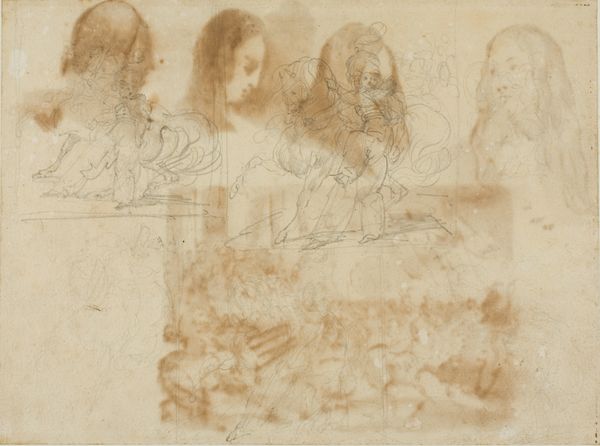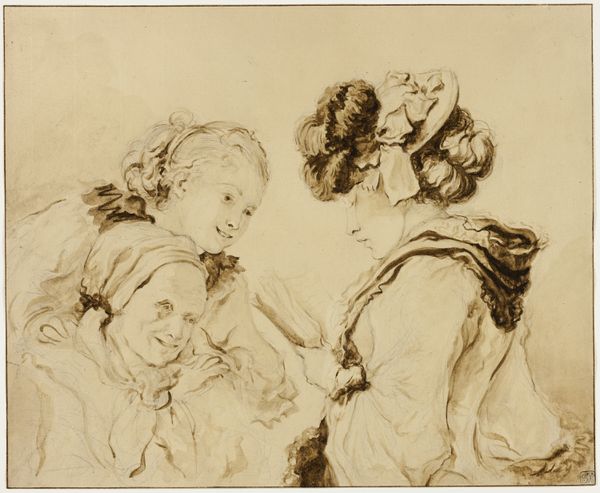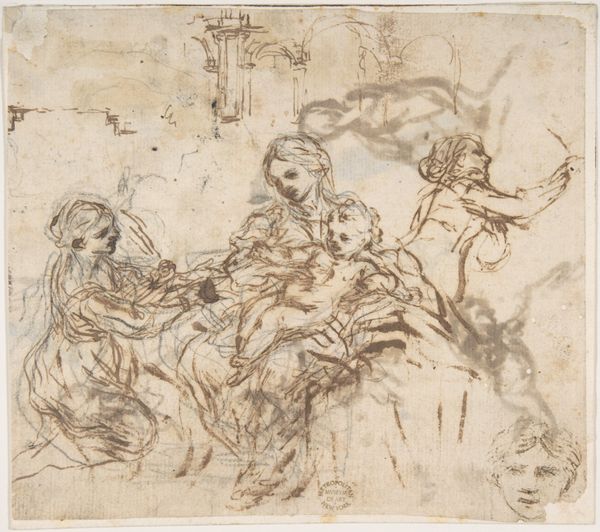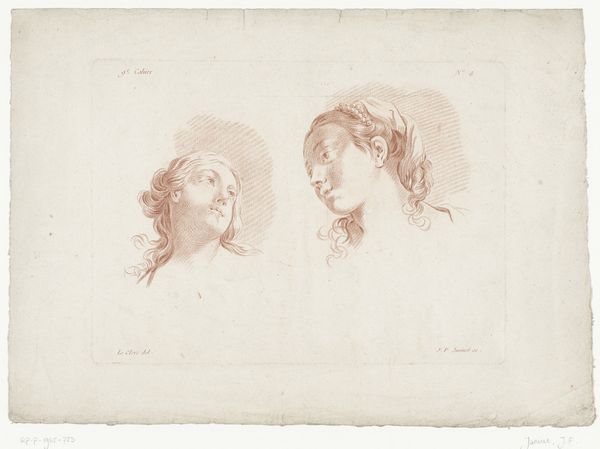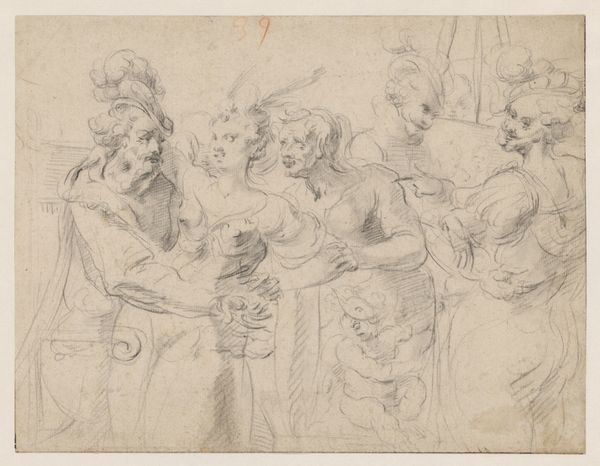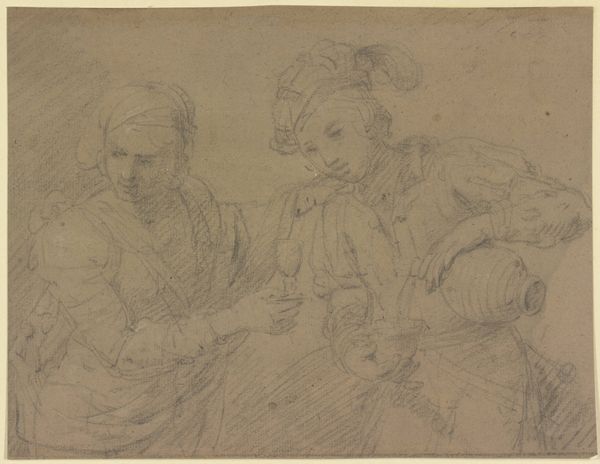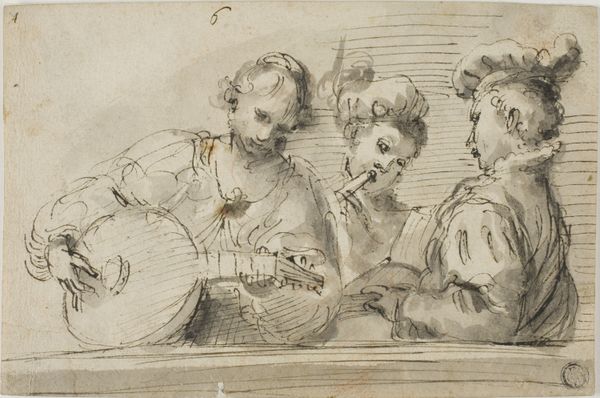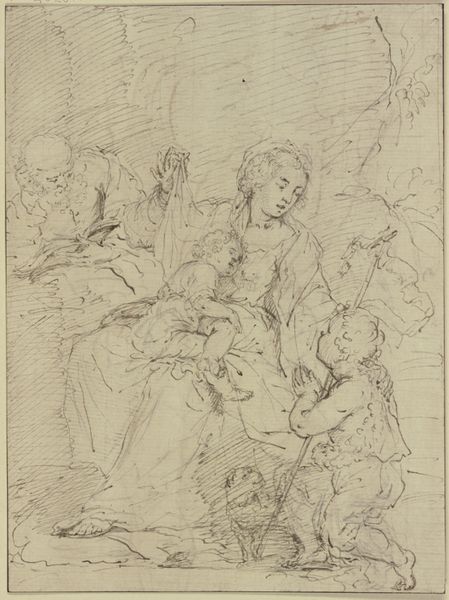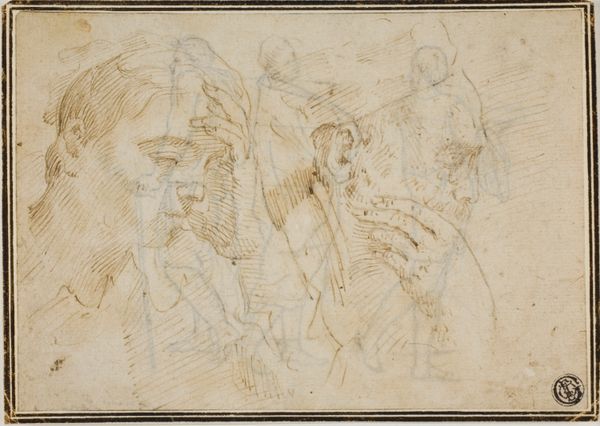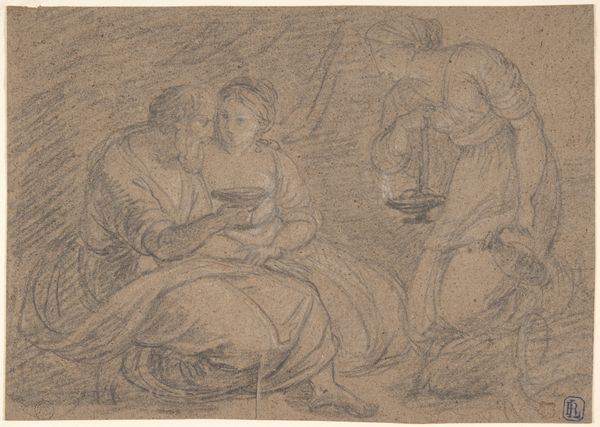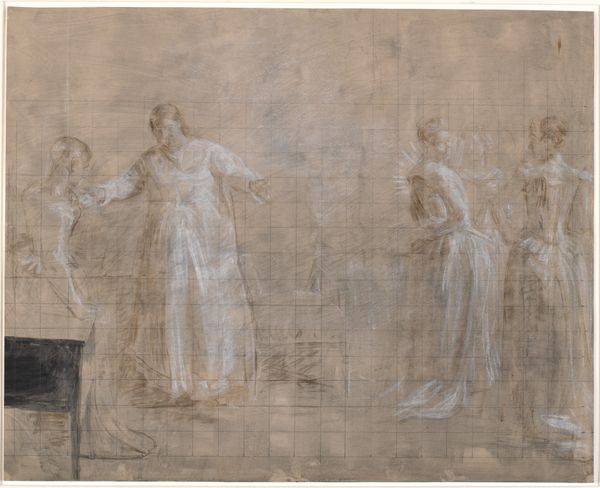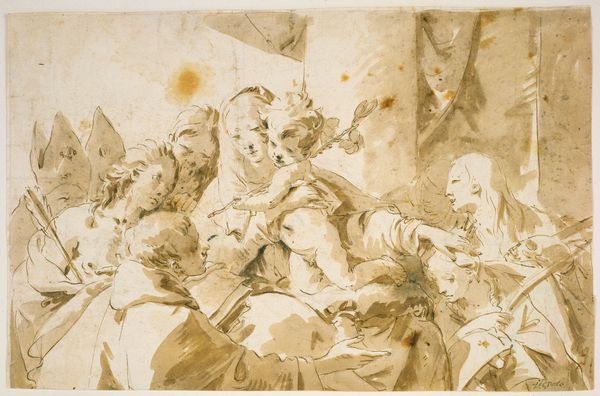
drawing, charcoal
#
portrait
#
drawing
#
baroque
#
charcoal drawing
#
oil painting
#
charcoal
Copyright: Public Domain: Artvee
Jean-Antoine Watteau created this drawing, "Two Studies of a Flutist and a Study of the Head of a Boy," sometime in the early 18th century. Watteau lived during the reign of Louis XIV, a time of immense social stratification. His own position as an artist was somewhere in the middle, as the art world itself was heavily influenced by the aristocracy. These figures, sketched in red and black chalk, offer a glimpse into the construction of identity within the French court. Music, like the flute played here, was seen as both a refined skill and a marker of social grace, but the performance also suggests the politics of display and the ways in which individuals perform their identities within specific social contexts. Watteau's sketches can be seen as an exploration of the performative aspects of identity. The figures seem caught in moments of rehearsal. What do they tell us about the lived experiences and self-fashioning of individuals navigating the complexities of courtly life?
Comments
No comments
Be the first to comment and join the conversation on the ultimate creative platform.

